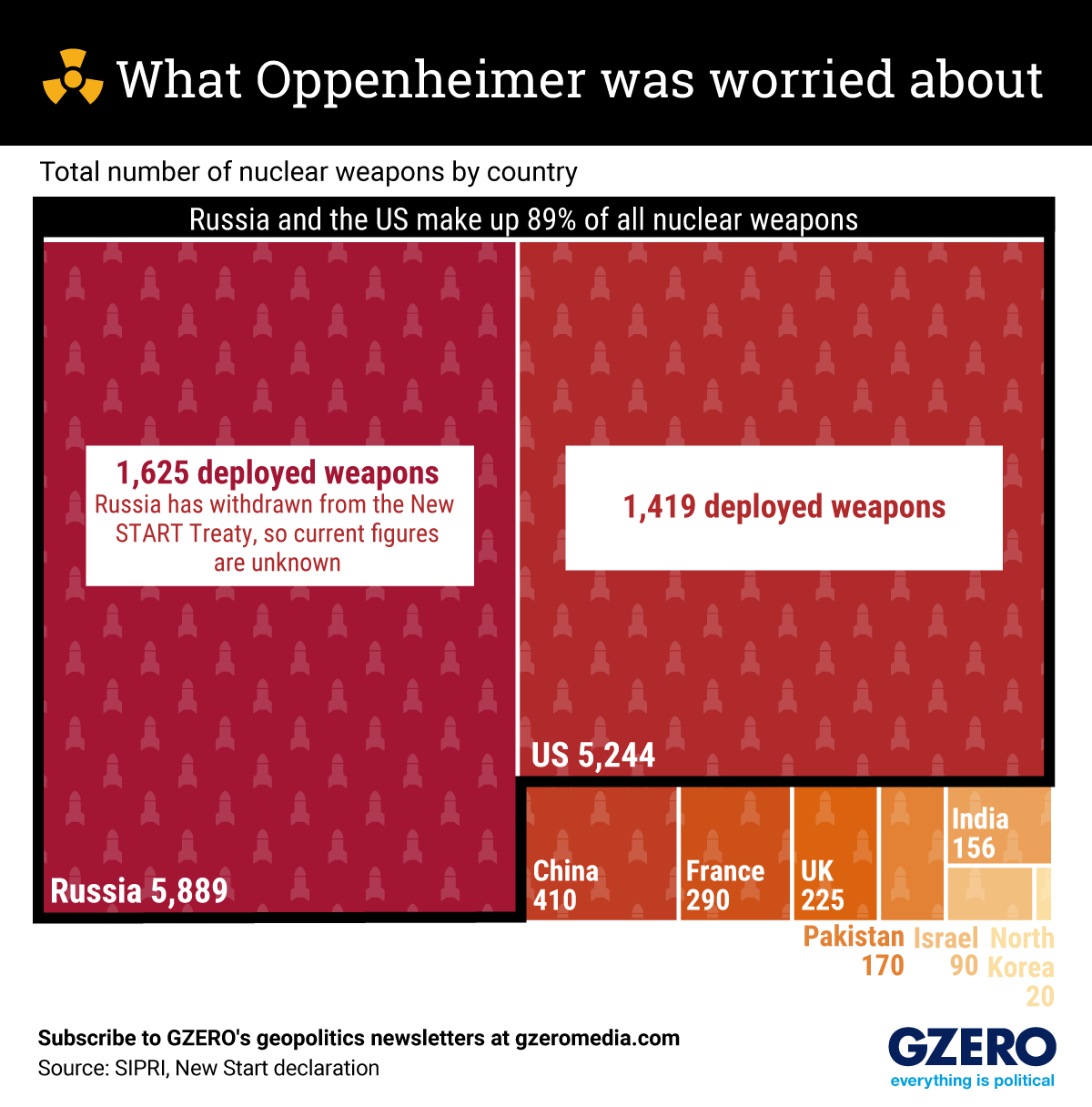July 20, 2023
After months of anticipation, it's D-Day for “Oppenheimer,” the $100 million Christopher Nolan biopic about J. Robert Oppenheimer, the celebrated American scientist who developed the first atomic bomb during World War II.
The journey of scientific revelation, brilliance, and execution is gripping enough, but an equally important part of Oppenheimer’s story is his postwar activism against the burgeoning nuclear arms race between Moscow and Washington. His calls to ditch nuclear weapons entirely helped to land him in the dock during the McCarthy hearings in the 1950s.
Was he right to worry? More than 75 years later, there are thousands of nuclear warheads in the world, each of which is vastly more destructive than anything Oppenheimer and his team worked on.
We take a look at who has the majority of those nuclear weapons today.
More For You
In this episode of Tools and Weapons, Microsoft Vice Chair and President Brad Smith sits down with Ed Policy, President and CEO of the Green Bay Packers, to discuss how purpose-driven leadership and innovation are shaping the future of one of the world’s most iconic sports franchises. Ed shares how technology and community-focused initiatives, from Titletown Tech to health and safety innovations on the field, are transforming not just the game of football, but the economy and culture of Green Bay itself. He explains how combining strategic vision with investment in local startups is keeping talent in the Midwest and creating opportunities that extend far beyond Lambeau Field.
Subscribe and find new episodes monthly, wherever you listen to podcasts.
Most Popular
Egyptians head to the polls to elect a new parliament during the first round of the Egyptian parliamentary elections in Giza, Egypt, on November 10, 2025.
Photo by Islam Safwat/NurPhoto
Egyptians are voting this month in parliamentary elections that aren’t expected to change who’s in charge, but could allow President Abdel Fattah el-Sisi to rule beyond 2030.
An injured soldier is transferred to a hospital following a clash between Thai and Cambodian troops over a disputed border area in Sisaket Province,Thailand, December 7, 2025.
Royal Thai Army/Handout via REUTERS
Thailand and Cambodia’s ceasefire is on the verge of collapse. Strikes were launched across their disputed border today, following clashes over the weekend that resulted in the death of a Thai soldier.
© 2025 GZERO Media. All Rights Reserved | A Eurasia Group media company.
